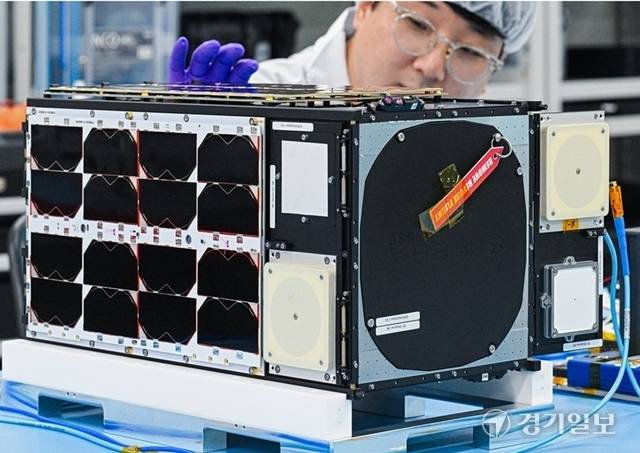Other news

What is Antenna Gain in Satellite Communications? (Explained simply)
Read more
Reflectarray Antennas for Small Satellites: From Concept to First Commercial Deployment
Read more
In the vast expanse of space, where stars twinkle and galaxies swirl, there exists a cosmic corner that’s spookier than the rest—graveyard orbits. As Halloween approaches, our attention is naturally drawn to stories of the mysterious and unknown. While Earth has its share of chilling tales, the cosmos holds its own ghost stories. Among these, the graveyard orbits stand out—a space where satellites, having completed their duties, find their final resting place.
This Halloween, let’s explore the importance of these orbits and the role they play in space. Join us as we dive into the world of retired satellites and their final resting places.

In our endeavor to explore and utilize space, we’ve established not only pathways for satellites to roam but also specific zones for them to rest, much like a dedicated cemetery. This is where the concept of “graveyard orbits” comes into play.
If we go back in time – the late 1950s saw the inception of our venture into space with the first artificial satellites like Sputnik. At that time, the idea of space being a finite resource hadn’t made its mark. These pioneers, as revolutionary as they were, inadvertently sowed the seeds for a future challenge—space debris. The urgency of the problem became clear in the 1980s. As a growing number of entities launched satellites, the vast expanse started showing signs of clutter. Defunct satellites, devoid of purpose and direction, drifted, creating potential hazards. The solution crystallized in the form of graveyard orbits.
There are primarily two types of graveyard orbits:
Satellites that have operated in the geostationary orbit, or GEO (an orbit where the satellite appears stationary relative to a fixed point on the Earth), are moved to a so-called “supersynchronous” orbit when they are decommissioned.
This orbit is typically a few hundred kilometers above the geostationary belt, reducing the chance of these decommissioned satellites interfering with operational GEO satellites.
The relocation typically involves an increase in the satellite’s orbital altitude and possibly some adjustments in inclination to further separate them from the operational GEO belt.
Unlike GEO, satellites in low Earth orbit (LEO) are generally not moved to a higher altitude graveyard orbit. Instead, the preferred end-of-life disposal method is to lower the satellite’s orbit to expedite its atmospheric re-entry, where it will burn up.
To guide and move these satellites, it’s often the TT&C antenna, like our S-Band antenna, that plays a crucial role. This technology ensures that the satellite is accurately navigated to re-enter the atmosphere and disintegrate safely.
This method reduces the satellite’s orbital lifetime, ensuring it re-enters and disintegrates in the Earth’s atmosphere after a certain period, typically targeted to be less than 25 years from the end of its mission.
Sending a satellite to its graveyard orbit is a well-thought-out process, and it’s not as straightforward as it might seem.
Imagine a satellite named “GhostSat” :
But why do we go through the trouble of moving satellites like GhostSat to graveyard orbits? The answer lies in safeguarding the night sky. By designating specific orbits for retired satellites, space agencies and companies demonstrate a commitment to responsible space operations.
As we venture further into the 21st century, our reliance on satellites for communication, research, navigation, and countless other applications only continues to grow. By the end of May 2023, there were approximately 7,700 active satellites orbiting Earth. Yet, that number is set to soar. Companies aim to launch thousands more satellites in the next decade, creating vast mega-constellations in low Earth orbit.
With such an influx, space, particularly the zones close to Earth, is becoming more congested. Without proper management, this can represent several threats :
As space becomes more congested, the potential for satellite collisions increases. These incidents not only jeopardize the operational capabilities of active satellites but can also produce thousands of debris fragments, further exacerbating the problem.
Once created, space debris can linger for decades or even centuries, depending on their altitude. In the densest regions of space near Earth, debris can pose significant risks to other satellites and even manned space missions.
Recognizing the impending challenges, international space agencies are collaborating on guidelines and best practices. These include measures like ensuring new satellites have deorbiting plans or are moved to graveyard orbits at the end of their operational lives.
Apart from graveyard orbits, there are ongoing research and development efforts to find ways to actively remove or mitigate space debris. Proposals range from using nets and harpoons to “grab” debris, to deploying lasers that can push debris to safer orbits or burn them up.
As the commercial satellite industry grows, maintaining the safety and reliability of space operations becomes an economic concern as well. A major collision event could disrupt global communication networks, have significant financial implications, and potentially set back space ventures.
In light of these considerations, the role of graveyard orbits becomes even more crucial. Every satellite that retires to these orbits becomes a testament to our responsibility towards ensuring a safer and sustainable space environme ;nt for future generations.
As we celebrate Halloween and explore the mysteries of graveyard orbits, it’s important to remember that space exploration is ever-evolving. With the commercialization of space and a surge in satellite deployments, the challenges of space debris are mounting. Solutions, such as the development of debris removal systems and more stringent debris mitigation guidelines, are imperative to ensure the continued safe use of our shared space environment.
The ghosts of retired satellites – like GhostSat – remind us that even in space, there’s always more to discover and protect. While the night sky may appear serene and unchanged, behind the scenes, there’s a constant effort to maintain its purity.
This Halloween, as you gaze at the night sky, take a moment to appreciate the celestial graveyard and the role it plays in preserving the beauty and mystery of the universe.
Happy Halloween, stargazers!



If you have any question, we would be happy to help you out.